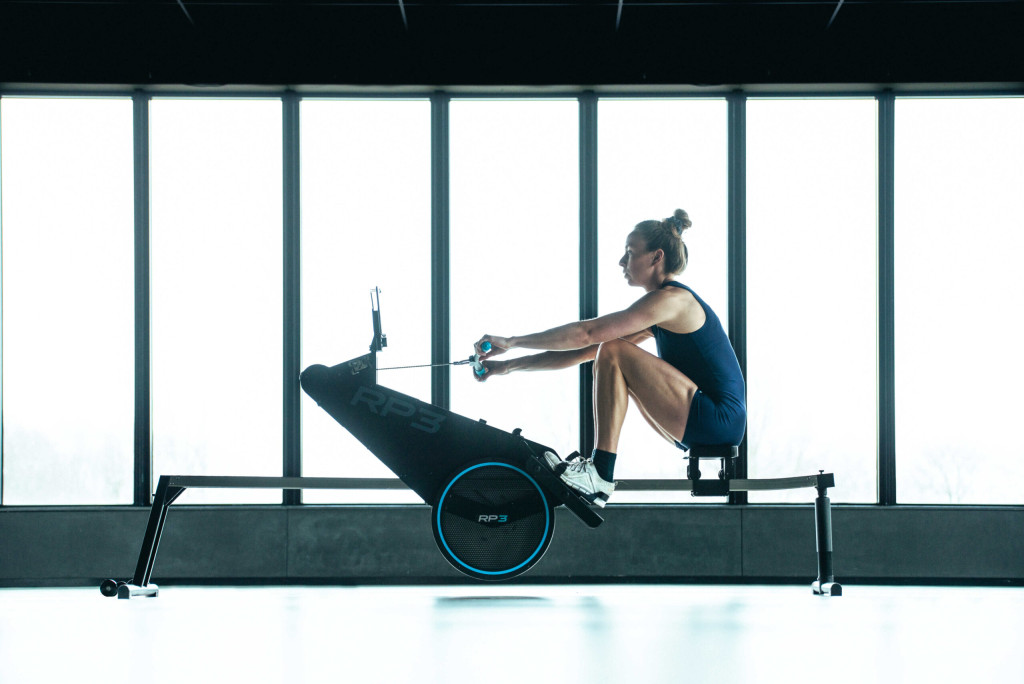Best low-impact cardio options for home
Discover 5 effective low-impact cardio options for home workouts that protect your joints while boosting fitness. Transform your health journey with these sustainable exercises for
Returning to exercise after an injury can be both physically and mentally challenging. Finding the right balance between rebuilding strength and protecting your recovering body requires patience and the right approach. Low-impact, controlled movements are your best allies during this critical phase. When managed properly, post-injury workouts can accelerate healing, restore confidence, and help you regain your previous fitness level—sometimes even surpassing it. Let’s explore how you can safely rebuild your strength after an injury with exercises that promote healing rather than risking setbacks.
Recovery isn’t a straight line—it’s a gradual process that your body navigates through distinct phases. Initially, inflammation and pain management are priorities, followed by gradually restoring range of motion, then rebuilding strength, and finally returning to normal activities. Each of these phases requires different approaches to exercise, with intensity increasing as healing progresses.
Your body’s healing timeline depends on the injury type, severity, and your overall health. Soft tissue injuries might heal within weeks, while bone injuries often require months. During recovery, controlled movement actually promotes healing by increasing blood flow to injured areas, which delivers essential nutrients and removes waste products.
Patience is perhaps the most important element in recovery. Pushing too hard too soon can extend your recovery time or lead to compensation injuries as other parts of your body work overtime to protect the injured area. Always consult with your healthcare provider before beginning any post-injury exercise programme.
Low-impact exercises provide the perfect balance for recovery: they engage muscles and improve cardiovascular health without placing excessive stress on healing tissues. These exercises are characterized by movements where at least one foot remains in contact with the ground or supporting equipment at all times, minimizing jarring forces on joints.
The benefits of low-impact training during recovery include:
Low-impact exercises allow you to maintain a training rhythm without the high forces that could disrupt healing. This makes them particularly useful for those recovering from joint injuries, stress fractures, or muscle tears. They’re also beneficial for long-term joint health even after recovery is complete.
Rowing stands out as one of the most effective rehabilitation exercises available because it combines several recovery-friendly elements in one fluid motion. The controlled, non-jarring movement pattern makes it particularly valuable for those returning to exercise after injury.
A dynamic rowing machine (as opposed to static models) creates a more natural movement that further reduces stress on joints. When rowing on a dynamic machine, both you and the machine move together, simulating the actual mechanics of on-water rowing. This reduces the impact forces at the catch position (the beginning of the stroke), which is particularly important for those with lower back or knee issues.
Rowing engages approximately 85% of your muscles through a full stroke while remaining gentle on recovering tissues. The science of rowing shows that the movement is fully adjustable in terms of resistance and intensity, allowing you to start with very light loads and gradually increase as recovery progresses. This makes it suitable for various recovery stages, from early rehabilitation to return-to-sport conditioning.
The smooth, gliding motion also helps maintain joint mobility without strain, while the consistent rhythm promotes improved circulation—critical for delivering healing nutrients to injured tissues.
When rebuilding upper body strength after injury, focusing on controlled movements with proper form is essential. Here are five exercises that provide effective strengthening while minimizing risk:
For all these exercises, begin with 8-10 repetitions and 1-2 sets, gradually increasing as strength improves. Remember that quality of movement is far more important than quantity during recovery.
Lower body strength is crucial for mobility and daily function. These exercises help rebuild that strength while protecting vulnerable areas:
For all lower body exercises, start with minimal or no resistance, focusing first on regaining proper movement patterns. Only add resistance when movements can be performed with perfect form and without pain.
Effective rehabilitation requires structure. A well-designed post-injury workout plan balances strengthening with adequate rest periods. Here’s a framework for developing your progressive routine:
| Recovery Phase | Exercise Frequency | Focus Areas | Intensity Level |
|---|---|---|---|
| Early (1-2 weeks post-clearance) | 2-3 days/week | Range of motion, circulation | Very low (30-40% effort) |
| Intermediate (3-6 weeks) | 3-4 days/week | Stability, light strength work | Low to moderate (40-60% effort) |
| Advanced (7+ weeks) | 4-5 days/week | Progressive strength, endurance | Moderate (60-75% effort) |
Always include a 5-10 minute warm-up of gentle movement to increase blood flow to muscles and joints before any workout. Similarly, cool down with light stretching after exercise to maintain flexibility.
Monitor your body’s responses carefully. Keep a simple journal tracking exercise, intensity, and any pain levels. This can help identify patterns and guide adjustments to your routine. Remember that consistent, moderate progress yields better results than sporadic intense sessions.
The path to recovery isn’t without obstacles. Being prepared for these challenges can help you navigate them successfully:
Pain management – Distinguish between normal discomfort and problematic pain. While mild soreness is expected, sharp or increasing pain signals a need to adjust your approach. The “10% rule” can help: increase intensity by no more than 10% weekly.
Fear of re-injury – Psychological barriers often persist after physical healing. Start with exercises where you feel completely confident and gradually introduce more challenging movements. Visualisation techniques can help overcome anxiety about particular movements.
Motivation fluctuations – Recovery is often slower than we’d like, leading to frustration. Setting small, achievable weekly goals provides regular wins to maintain motivation. Tracking specific metrics (like range of motion or exercise duration) makes progress more visible.
Plateau periods – Progress is rarely linear. When you hit a plateau, consider changing variables like exercise order or rest periods rather than increasing intensity, which might risk re-injury.
Knowing when to advance your recovery programme is critical for safe progression. Look for these positive indicators that suggest readiness to increase intensity:
Conversely, these warning signs indicate a need to scale back:
When progressing, change only one variable at a time—either duration, resistance, or complexity—and allow 1-2 weeks to adapt before changing another element.
At RP3 Rowing, we understand the challenges of rebuilding strength after injury. Our dynamic rowing machines are specifically designed to provide effective, full-body workouts while minimizing stress on vulnerable joints and tissues. The natural, fluid motion of our indoor rowing machines closely mimics on-water rowing, creating a safe environment for rehabilitation while still delivering an effective workout. Proper technique is essential for maximizing benefits and preventing re-injury during rehabilitation. Remember to consult with your healthcare provider before beginning any post-injury exercise programme, and listen to your body throughout the recovery process.
If you’re interested in learning more about the benefits of rowing, reach out to our team of experts today.
Discover 5 effective low-impact cardio options for home workouts that protect your joints while boosting fitness. Transform your health journey with these sustainable exercises for
Discover 5 effective low-impact exercises that protect your back while maintaining fitness intensity. Learn proper form techniques to strengthen your spine without risking injury.
Discover 5 effective home workouts that build strength without stressing your joints. Learn fluid movement techniques for pain-free exercise that delivers results while protecting your
Discover effective low-impact fitness strategies that build strength and cardio health without damaging your joints. Learn sustainable workout techniques for long-term health and injury prevention.
Discover 5 effective full-body low-impact workouts perfect for beginners that protect your joints while building strength and fitness. Start your sustainable exercise journey today!
Discover how low-impact fitness creates sustainable health benefits without joint pain. Learn 5 full-body workouts that deliver results while preserving your body for decades of
Discover why low-impact workouts deliver powerful fitness results without joint damage. Learn 6 key benefits and find the perfect exercise for sustainable daily fitness that
Discover why low-impact training on recovery days accelerates muscle repair, prevents injuries, and boosts long-term fitness gains. Learn optimal activities and avoid common recovery mistakes.
Discover why rowing machines deliver a complete workout while protecting your joints. Engage 85% of your muscles with zero impact stress—perfect for fitness enthusiasts of
Discover effective low-impact exercises perfect for returning to fitness after breaks or injuries. Learn 5 joint-friendly workouts that rebuild strength while preventing setbacks on your
Discover how rowing uniquely engages 85% of your muscles while enhancing flexibility in one efficient workout. Build strength and mobility simultaneously without stressing your joints.
Discover 5 low-impact routines that challenge your entire body without stressing your joints. Build strength and burn calories while protecting your knees, hips, and spine.
Discover how consistent low-impact activity delivers powerful physical and mental benefits without joint stress. Build fitness, reduce stress, and improve mobility through sustainable daily movement
Discover why rowing machines offer the ultimate low-impact, full-body workout for home fitness. Get 85% muscle engagement with minimal joint stress—perfect for all ages and
Discover how low-impact exercise protects your joints while delivering powerful fitness results. Learn 5 joint-friendly workouts that maintain mobility and prevent pain as you age.
Discover how to build sustainable low-impact fitness habits that protect your joints while delivering exceptional results. Learn proven strategies for lifelong exercise consistency without pain.

We will send you a personal quote as soon as possible.
As soon as the quote is ready, you will receive a link by email to order directly.
